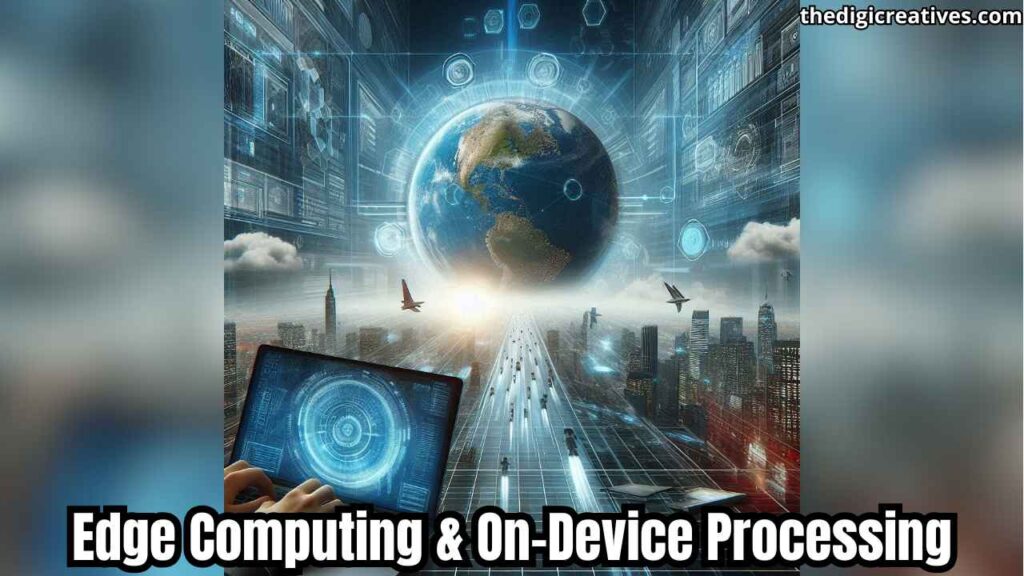Table of Contents
ToggleIntroduction
Smart devices have become an essential part of our daily lives, from smartphones and smartwatches to smart home assistants and connected appliances. But what makes these gadgets so “smart”? The answer lies in the core technologies in smart devices—cutting-edge innovations like AI, IoT, 5G, and advanced sensors. These technologies work together to deliver seamless, intelligent, and personalized experiences. In this 2000-word guide, we’ll break down the key tech powering smart devices, how they function, and why they matter.

Artificial Intelligence (AI) & Machine Learning (ML)
AI is the brain behind smart devices, enabling them to learn, adapt, and make decisions. Machine Learning (ML), a subset of AI, allows devices to improve over time by analyzing user behavior. For example, virtual assistants like Siri and Alexa use natural language processing (NLP) to understand and respond to voice commands. AI also powers facial recognition in smartphones and predictive text, making interactions smoother and more intuitive.
Internet of Things (IoT) & Connectivity
IoT connects smart devices to the internet and each other, creating an ecosystem where they communicate seamlessly. Whether it’s your smart thermostat adjusting the temperature based on weather data or your fridge reminding you to buy milk, IoT makes it possible. Technologies like Bluetooth, Wi-Fi 6, and Zigbee ensure fast, reliable connections, while cloud computing stores and processes vast amounts of data.
5G & High-Speed Data Transfer
The rollout of 5G networks has revolutionized smart devices by offering ultra-fast speeds and low latency. This means smoother streaming, real-time gaming, and instant cloud access. 5G also enhances IoT applications, allowing smart cities, autonomous vehicles, and remote healthcare monitoring to function efficiently.
Advanced Sensors & Biometrics
From fingerprint scanners to heart rate monitors, sensors are the sensory organs of smart devices. LiDAR sensors in iPhones enable augmented reality (AR), while accelerometers and gyroscopes track movement in fitness wearables. Biometric authentication, like Face ID and iris scanning, adds an extra layer of security, ensuring only authorized users can access the device.

Edge Computing & On-Device Processing
Instead of relying solely on cloud servers, edge computing processes data locally on the device. This reduces latency, improves privacy, and enhances performance. For instance, smart cameras analyze footage on-device to detect intruders without sending data to the cloud. This is crucial for real-time applications like autonomous drones and industrial automation.
Key Innovation
- AI-Powered Personalization: Smart devices leverage AI to tailor experiences—like Netflix recommending shows or Spotify curating playlists based on your preferences. The more you use the device, the better it understands your habits, making everyday tasks effortless.
- Seamless IoT Integration: Imagine your smartwatch detecting your sleep patterns and adjusting your smart lights to wake you up gently. IoT creates a synchronized environment where devices work together, enhancing convenience and efficiency.
- 5G’s Role in Real-Time Applications: With 5G, smart devices can handle data-intensive tasks like 8K video streaming and cloud gaming without buffering. It also supports innovations like remote surgery and smart traffic management systems.
- Biometric Security Enhancements: Gone are the days of passwords—smart devices now use facial recognition, fingerprint scanning, and even vein pattern authentication for secure access. These technologies ensure that only you can unlock your device or authorize payments.
- The Shift to Edge AI: By processing data locally, smart devices reduce dependency on the cloud, leading to faster responses and better privacy. This is especially important for healthcare wearables that monitor vital signs in real time without constant internet connectivity.
Augmented Reality (AR) & Virtual Reality (VR)
Augmented Reality (AR) and Virtual Reality (VR) are transforming how we interact with smart devices. AR overlays digital information onto the real world—think Snapchat filters or IKEA’s app that lets you visualize furniture in your home. VR, on the other hand, immerses users in a completely digital environment, popular in gaming and training simulations. Smartphones, AR glasses, and VR headsets rely on high-resolution displays, motion sensors, and powerful GPUs to deliver these experiences. As these technologies advance, we’ll see more applications in education, healthcare, and remote collaboration.

Battery & Energy Efficiency Innovations
One of the biggest challenges in smart devices is battery life—thankfully, breakthroughs in fast charging, solid-state batteries, and low-power processors are extending usability. Companies are also leveraging AI to optimize power consumption, like adaptive brightness and background app management. Solar-powered wearables and kinetic energy harvesting (where movement charges the device) are emerging as sustainable solutions. With energy-efficient advancements, future smart devices will last longer while being kinder to the environment.
Why These Technologies Matter
The core technologies in smart devices aren’t just about convenience—they’re shaping the future. AI and IoT are driving smart homes and cities, 5G is enabling futuristic applications, and edge computing is making devices more independent and secure. As these technologies evolve, we’ll see even smarter, faster, and more intuitive gadgets that seamlessly integrate into our lives.
Also Read: What Industries Need SEO The Most in 2025
Conclusion
Smart devices have come a long way from being luxury items to everyday essentials. The core technologies in smart devices — like AI, IoT, sensors, cloud computing, and wireless protocols — form the foundation of this smart revolution. These components don’t just work in isolation; they integrate seamlessly to provide a smarter, more efficient, and personalized user experience.
As these technologies continue to evolve, we can expect even more innovative features and improved user interactions. Whether it’s optimizing healthcare through wearables or transforming homes with intelligent automation, smart devices are paving the way toward a connected future.





